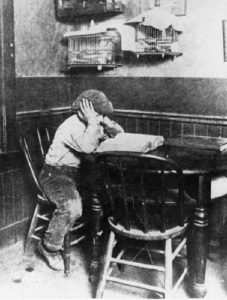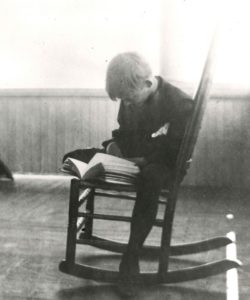Biography
NATHANAEL WEST (1903-1940) was born Nathan Weinstein in Upper West Side in New York City. He was expelled from school and only just passed his degree at Brown University. He had gained admittance to both college and university by deceit, after he had forged his high school transcript and ‘borrowed’ one from a cousin who had the same name for his university entrance. (Malcolm Cowley referred to these misdemeanours as “the ethics of Dada.”) His Jewish background excluded him from much of fraternity life at university. He was supremely inadequate at sport, a trait he mythologized as raconteur and writer, and he flunked his classes spectacularly. When a student he read widely, though he was drawn far more to French surrealism, Dada and the Fin de Siècle British and Irish writers, Oscar Wilde especially, than to the bestselling realism of his time.
His family’s business failures meant that his financial support, which had afforded him life in Paris for three months in 1926, was withdrawn. From the late 1920s he worked for his father’s building firm, and eventually as night manager of Manhattan’s Hotel Kenmore Hall, then assistant manager of the Sutton Hotel, East 56th Street, which he turned into a writers’ retreat. Dashiell Hammett finished The Maltese Falcon there; Maxwell Bodenheim, Erskine Caldwell, S. J. Perelman (West’s brother-in-law), Edmund Wilson and others were frequent overnight visitors. This job also afforded West time to write: The Dream Life of Balso Snell was published in 1931 and Miss Lonelyhearts, considered his best novel, was published in 1933, though it had been started in early 1930 and finished in late 1932; A Cool Million followed in 1934.
These novels were commercially unsuccessful though. West relocated to Hollywood as a contract scriptwriter for Columbia Pictures. He worked on B movies mostly, with no outstanding success, and completed his last novel, The Day of the Locust, which was published in 1939. He had written to Scott Fitzgerald: “So far the box score stands: Good reviews—fifteen percent, bad reviews—twenty five percent, brutal personal attacks, sixty percent.” He admitted though that: “Sales: practically none.” This disappointed West, who originally had high hopes for the books but reflected that “I seem to have no market whatsoever.” Bennett Cerf, his publisher at Random House, was enthusiastic initially but in fact did little to promote the book. West described the book to Edmund Wilson as a “definite flop.”
Nathanael West died in California in December 1940 with his wife in a car accident when he jumped a stop line; by repute he was a bad driver. He was only 37. His great friend F. Scott Fitzgerald had died the previous day.
“…an artist can afford to be anything but dull.” – NATHANAEL WEST
“Wildly funny, desperately sad, brutal and kind, furious and patient there was no other like Nathanael West.” – DOROTHY PARKER





 Allen Lane, the founder of Penguin books, was a man who liked to be seen riding a virtuous horse though his spurs were as sharp as an abacus: money was his game and he chanced to sell his new Penguin range through his Penguincubator in 1937, in tobacconists alongside newspapers and boiled sweets, also a few placed as concessions in branches of F. W. Woolworth’s. One Penguincubator was commissioned at Charing Cross Station, placed next to a machine vending cigarettes. (6d the price of a packet of fags, 6d the price of the first Penguins, though am not sure if Lane had thought through how you were supposed to keep the books alight without a filter.) Booksellers in the Charing Cross locality objected to the Penguincubator and it was removed. It would seem that they were never successful in any case.
Allen Lane, the founder of Penguin books, was a man who liked to be seen riding a virtuous horse though his spurs were as sharp as an abacus: money was his game and he chanced to sell his new Penguin range through his Penguincubator in 1937, in tobacconists alongside newspapers and boiled sweets, also a few placed as concessions in branches of F. W. Woolworth’s. One Penguincubator was commissioned at Charing Cross Station, placed next to a machine vending cigarettes. (6d the price of a packet of fags, 6d the price of the first Penguins, though am not sure if Lane had thought through how you were supposed to keep the books alight without a filter.) Booksellers in the Charing Cross locality objected to the Penguincubator and it was removed. It would seem that they were never successful in any case.